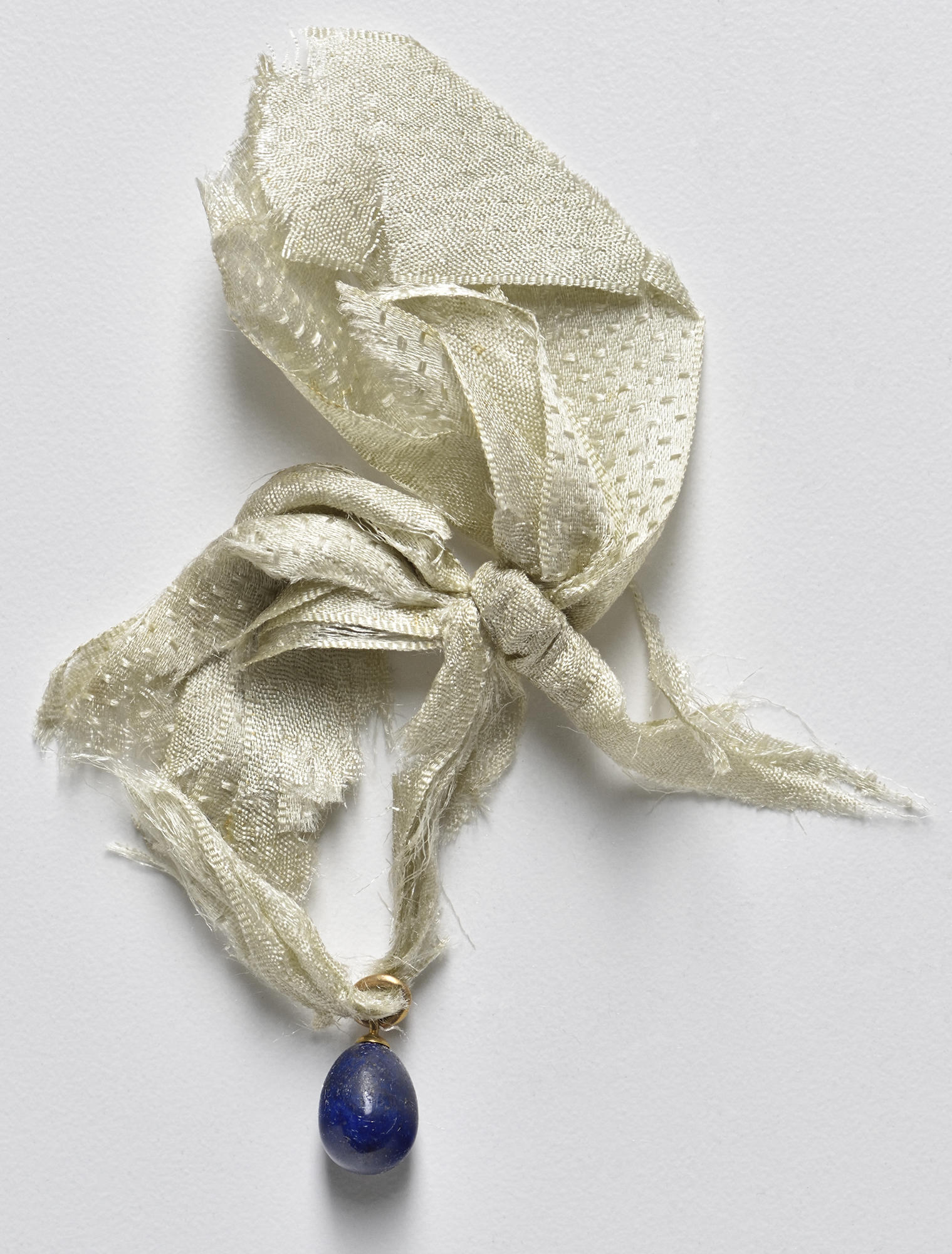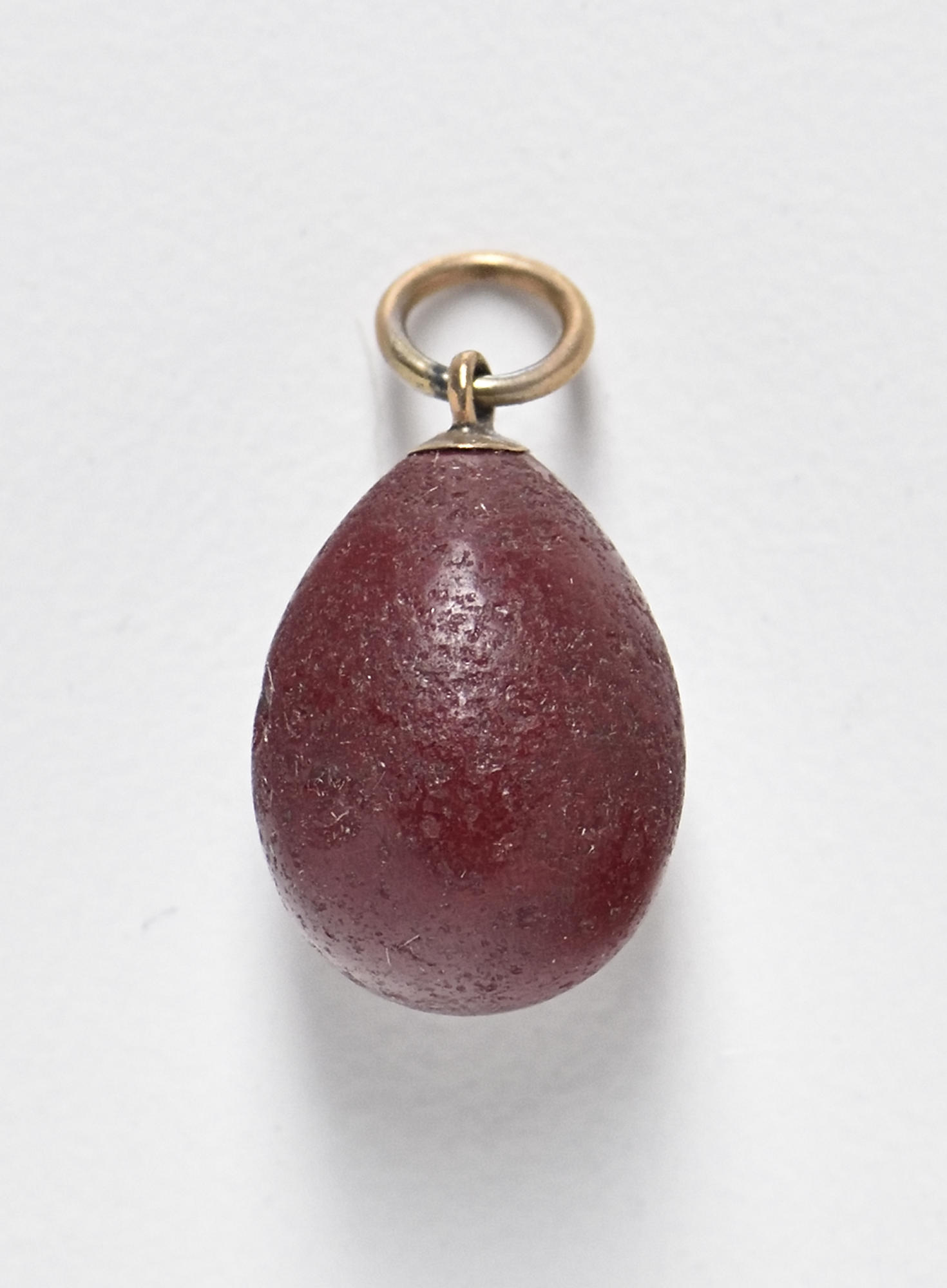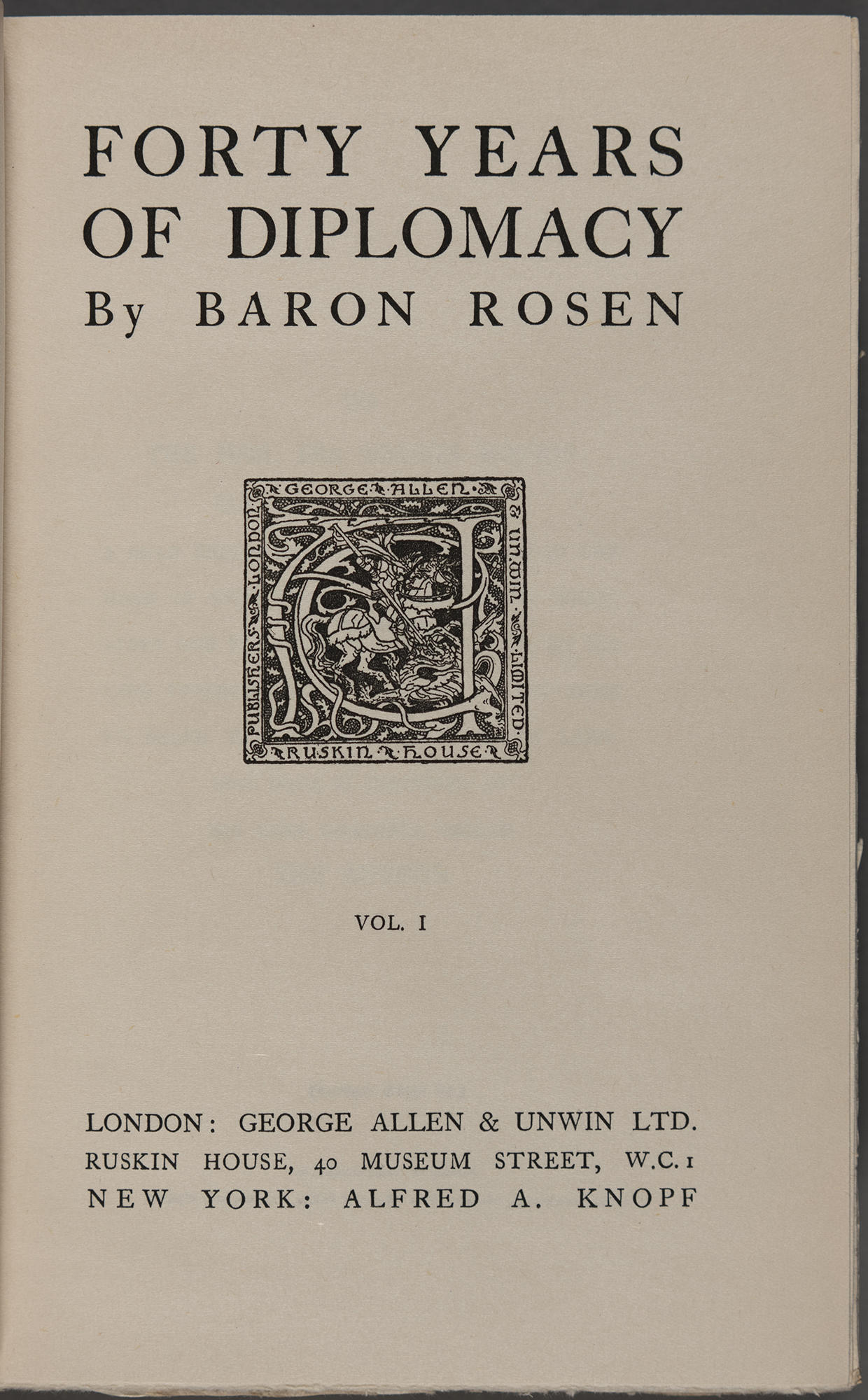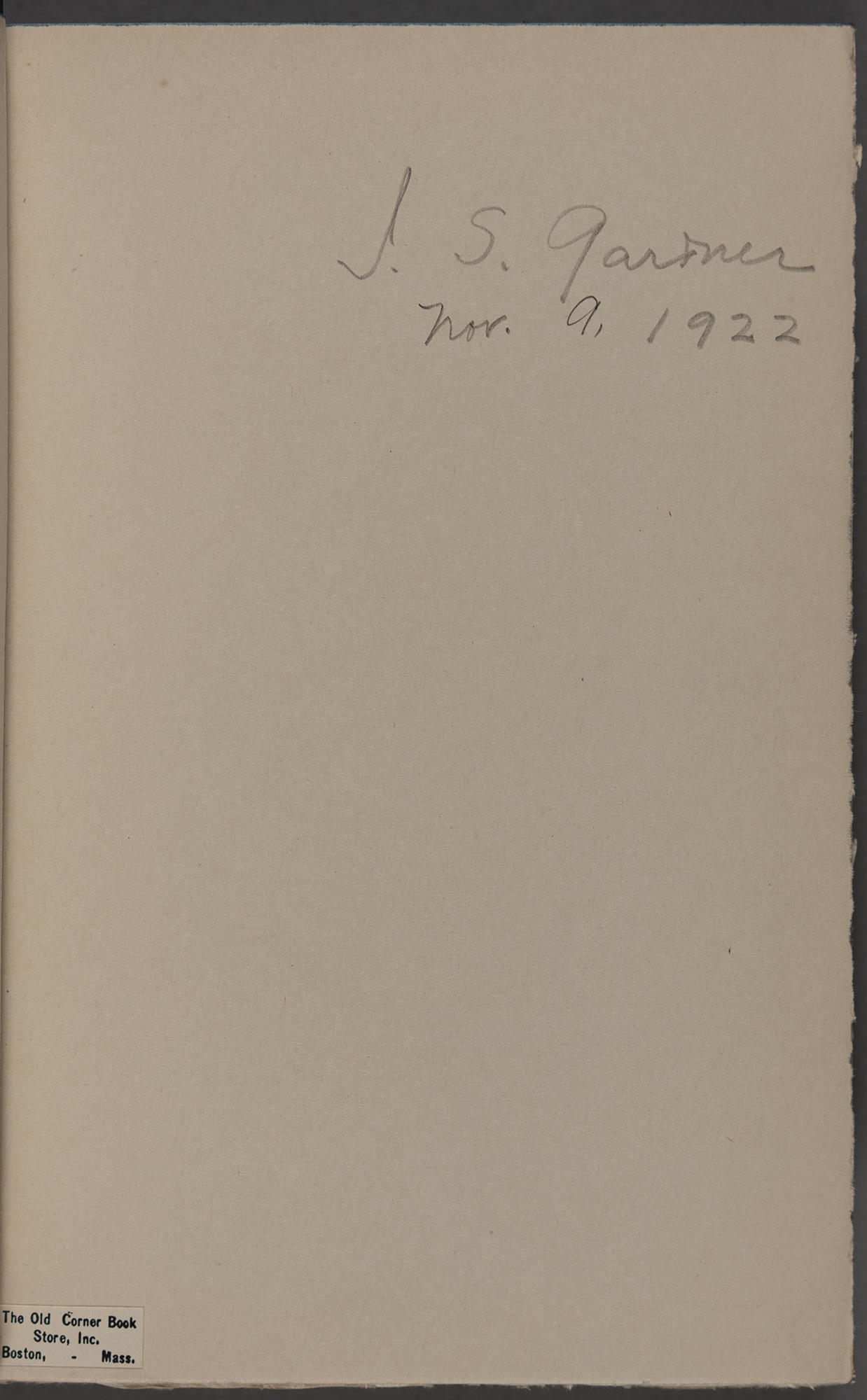The desk in the Macknight Room holds many of Isabella Stewart Gardner's personal treasures. Two such objects are these small, egg-shaped pendants that were found strung on a green ribbon inside a tiered Chinese lacquer box, which sits on top of the desk. According to an attached notecard written by Morris Carter, the Museum's first director, they were a "gift from the Baron and Baroness Rosen."
Isabella had a wide and varied circle of friends throughout her life, and as we now know from these pendants, Russian foreign dignitaries were apparently among them. It is not known exactly when the friendship between Isabella and the Rosens began, but in a letter from Baroness Elizabeth Rosen dated October 30, 1923, she refers to Isabella as "an almost lifelong friend of theirs." So who were the Baron and Baroness Rosen and what is the significance of these egg pendants?
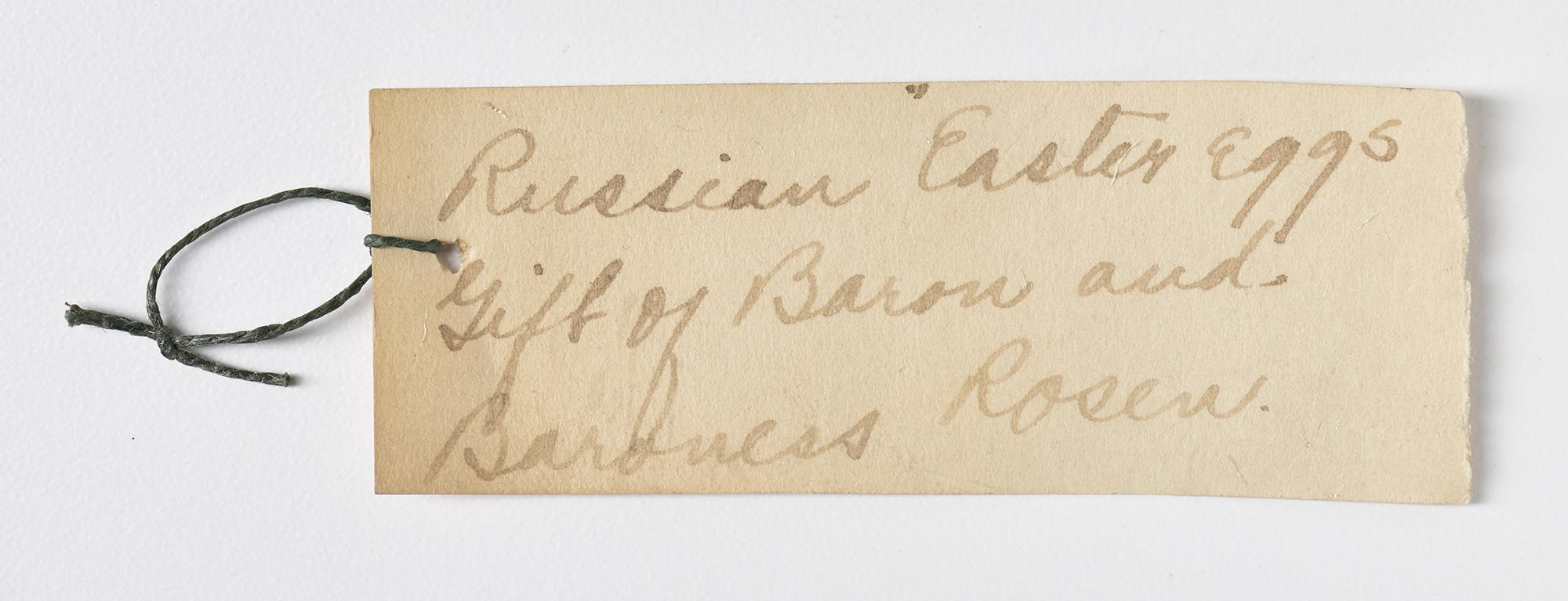
Note about the Russian Easter eggs written by Morris Carter, the first director of the Isabella Stewart Gardner Museum
Baron Roman Romanovich Rosen was a highly accomplished and decorated diplomat for the Russian Empire. His career started in the 1870s and came to an abrupt halt in 1917, when the Bolshevik Revolution forced him and his wife to flee Russia for good. In a flurry of correspondence, Isabella essentially crowdsourced funding from her own circle of acquaintances and family members to help support the Rosens to start anew after their flight from their home country. It is clear they were close friends. The Rosens eventually settled in the United States where the Baron wrote a series of articles documenting his career in foreign diplomacy for The Saturday Evening Post. This series was published in 1922 as a two-volume book titled Forty Years of Diplomacy, which Isabella purchased for her library that same year.
The egg pendants given to Isabella hold a special meaning when considering their Russian givers. The significance lies not simply within the eggs themselves, but with the act of giving eggs. The symbolism of the egg has evolved over time to carry different yet similar meanings around the world. In general, the egg is a symbol of rebirth, renewal, and new life. In pre-Christian times, this symbolism was closely associated with springtime and the emergence from the hibernation of winter, fertility, and protection. In the Christian religion, the egg was adopted as a symbol of the resurrection (rebirth) of Christ on what is now called Easter Sunday. The giving and receiving of eggs on this day was meant to affirm the participants' faith in the miracle of the resurrection.
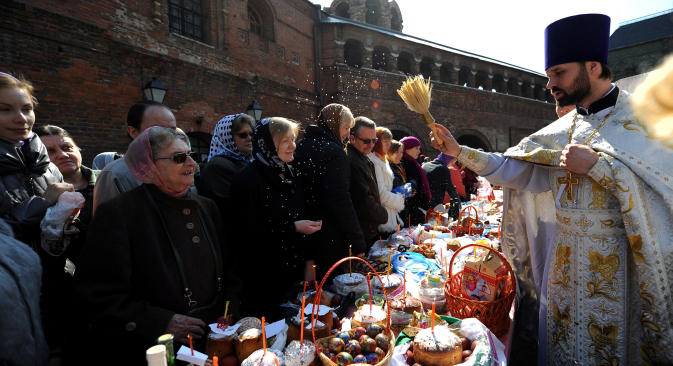
Easter celebration in Russia
Photo: AFP / East news
In Russia, gifting decorative eggs during Easter is a tradition dating back to the 15th century. Starting around the 1890s, a tradition arose among more affluent families to give a girl an egg pendant every year just before Easter, which she would place on a chain and wear as a necklace from Easter Sunday to Ascension Day, roughly forty days after Easter. The ever-growing string of eggs was meant to chronicle the life a girl lived until her marriage. After she was married, a separate string on the necklace would be attached and her husband would give her a pendant every year to document their life together.

House of Fabergé (Russian, founded 1842), Easter Egg Necklace, 1900s
State Hermitage Museum, Saint Petersburg, Russia
Unfortunately we do not know exactly when the Rosens gave Isabella these egg pendants, but they were most likely an Easter gift, and possibly given to her after the Rosens resettled in the United States. Perhaps the eggs were a celebration of the Rosens’ own “rebirth” after settling in a new country and starting a new chapter in their lives. The chosen colors of the eggs may hold significance as well. The word for the color red in Russian is krasni or krasnyy, and historically had the dual meaning of describing something as beautiful, good, or honorable. The color blue was traditionally used as a symbol of noble birth—a nod to the term "blue-blooded."
Regardless of how you celebrate this time of year, it is important to look forward to new beginnings and fresh starts as the world emerges from a cold winter into a bright spring. And perhaps consider giving your loved ones an Easter egg!
You May Also Like

Explore the Museum
Macknight Room

Explore the Collection
German, Ostrich, 17th century

Read More on the Blog
Esther: A Biblical Heroine
